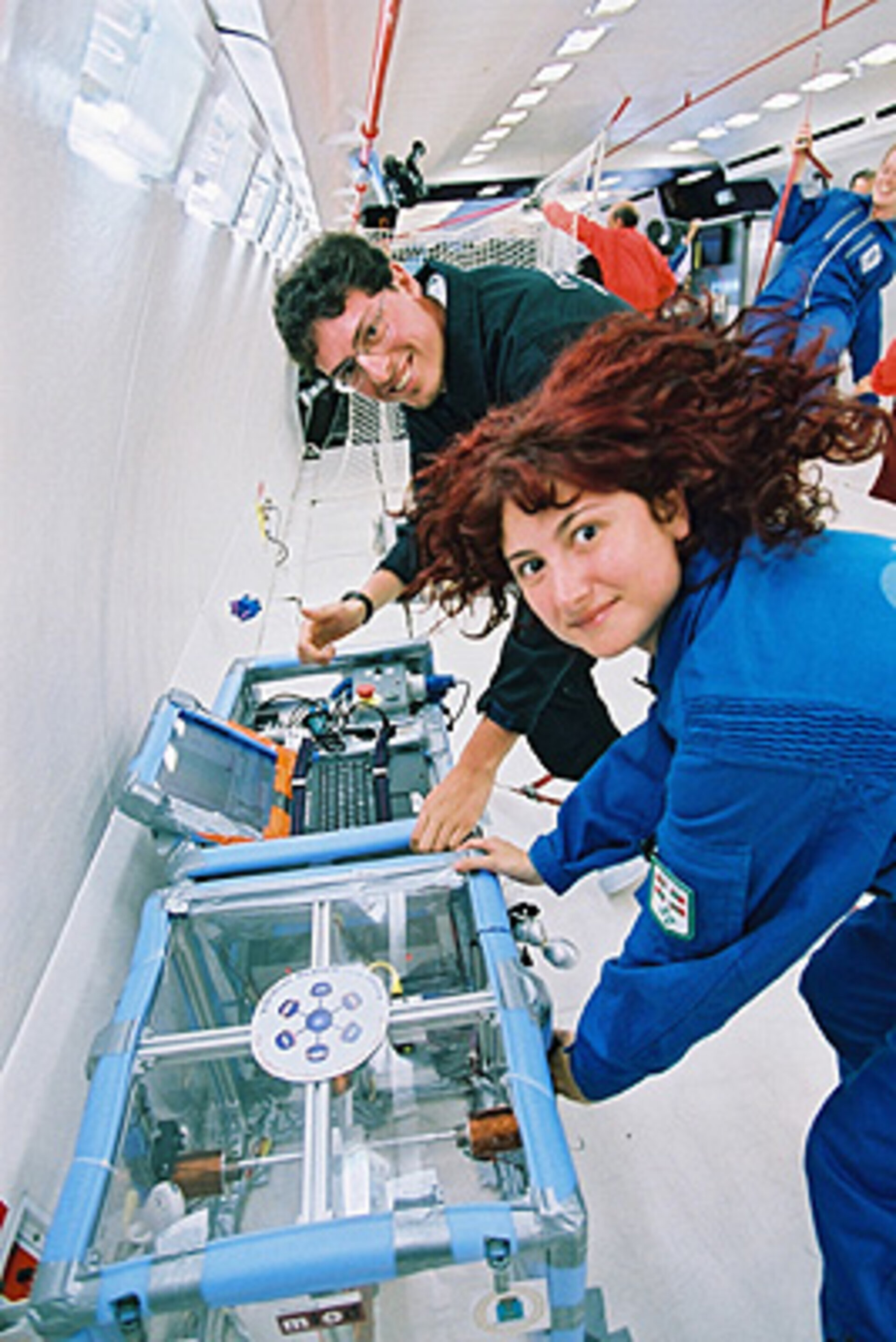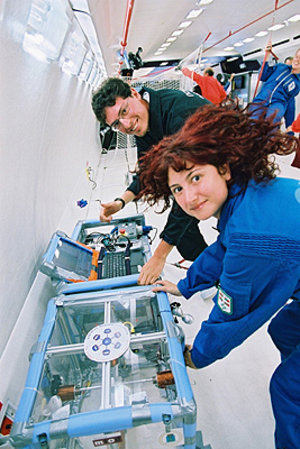How to be lighter than a feather
Many people say they would love to float in space. If this is your dream it could come true if you take part in ESA’s 8th Student Parabolic Flight Campaign. To be selected though, you need a good experiment to take along with you.
Every year ESA’s Education Department organises a parabolic flight campaign to give 120 European and Canadian students the opportunity to carry out experiments in a stage of weightlessness. The flights take place in a specially designed Airbus A300 called the Zero-G, or the vomit comet by those with more delicate stomachs.

To take part in next year’s campaign, from 12 to 29 July 2005, you need to find three like-minded students aged from 18 to 27 to make up your team, a university professor to endorse your application, and above all, an original and interesting experiment to carry out in the condition of weightlessness. Each team of four will be able to fly their experiment twice, with two members of the team flying each time.
Last year’s experiments were from a variety of scientific areas and included: personal robotic assistants, stabilising devices, body vibration exercises and examining the behaviour of the tilapia fly. Online registration will be available from mid-December to 30 January 2005 but the experiment form can be downloaded now.
This must be one of the best opportunities open to students so get your team together and start thinking of good ideas to make sure you are one of the lucky 120 who report that, “being weightless is just great”.





